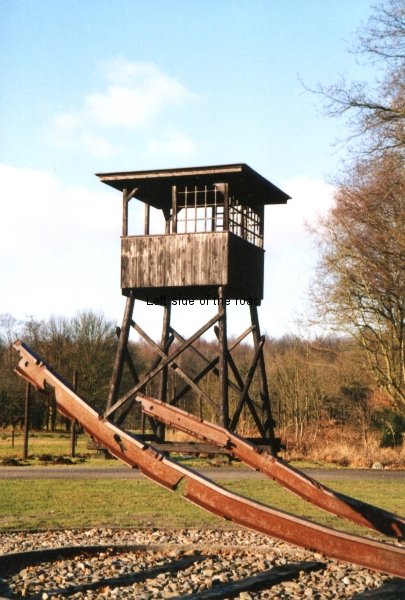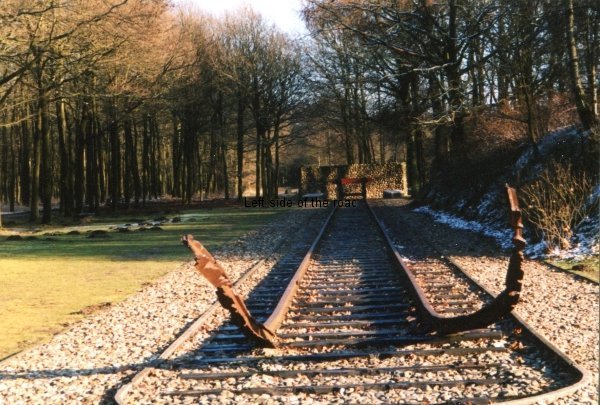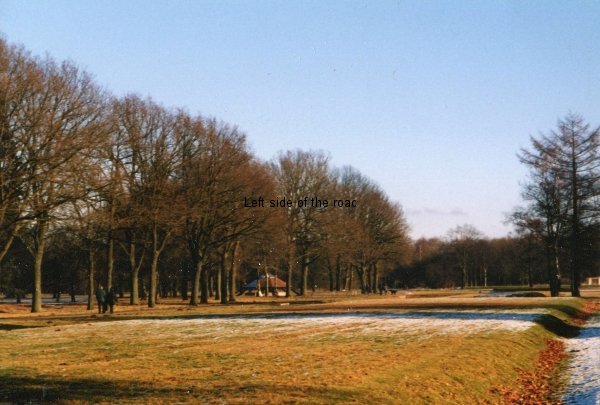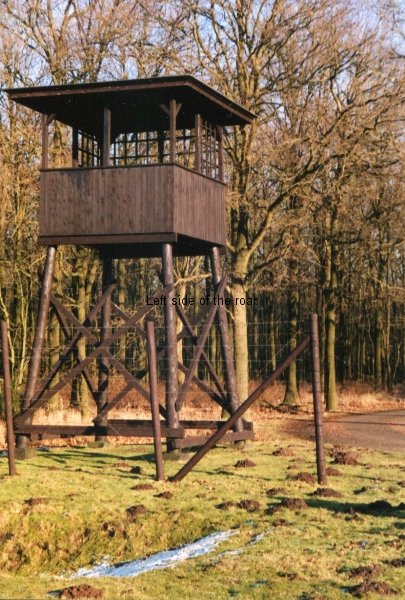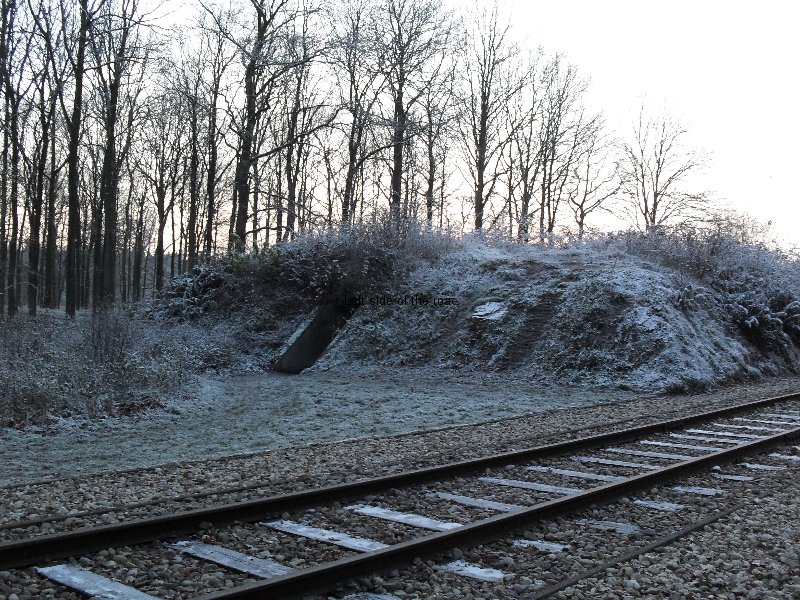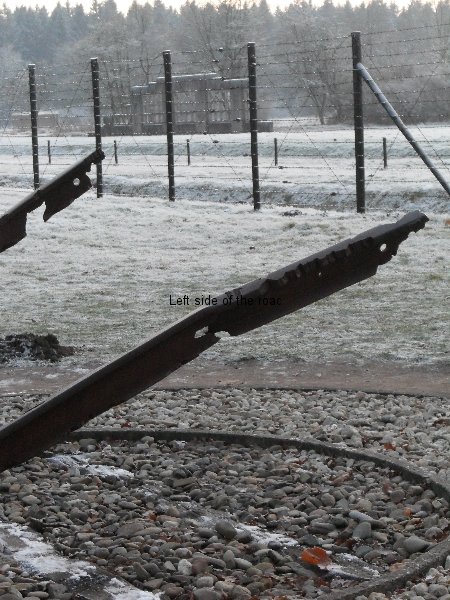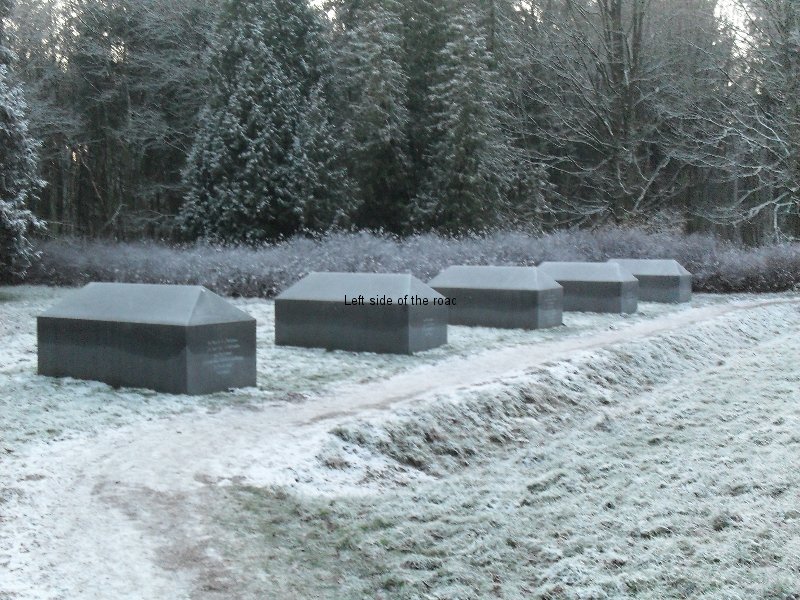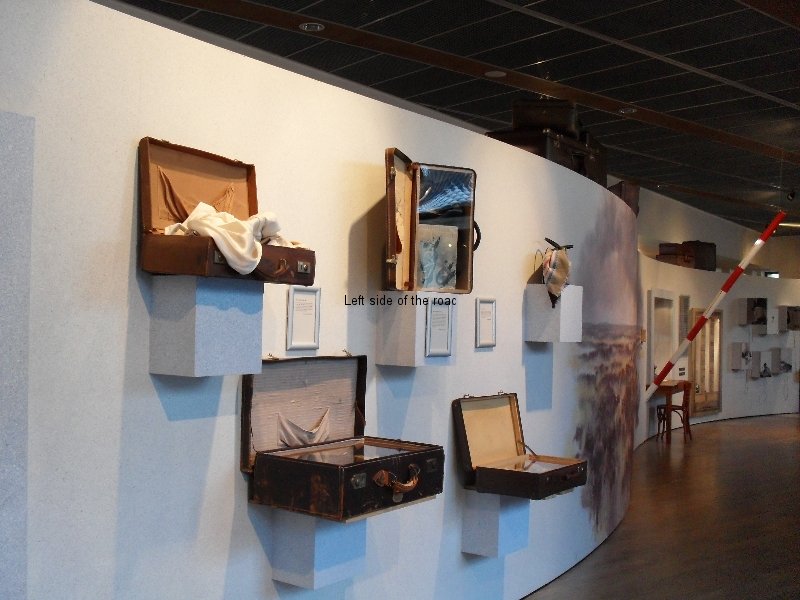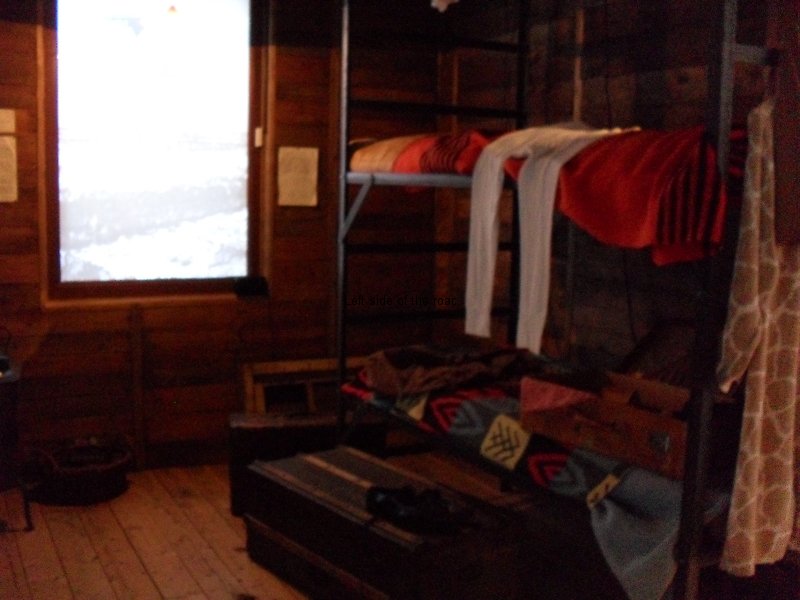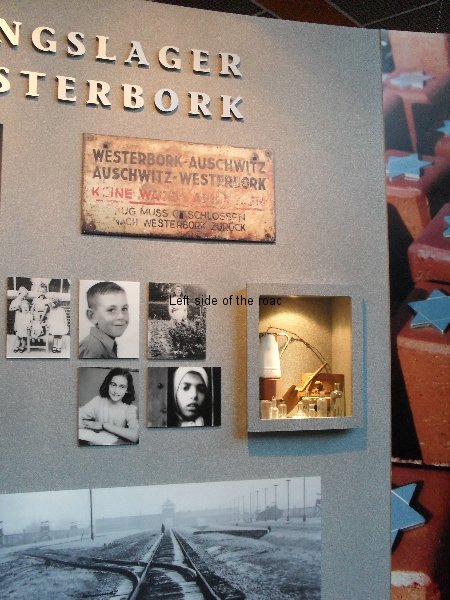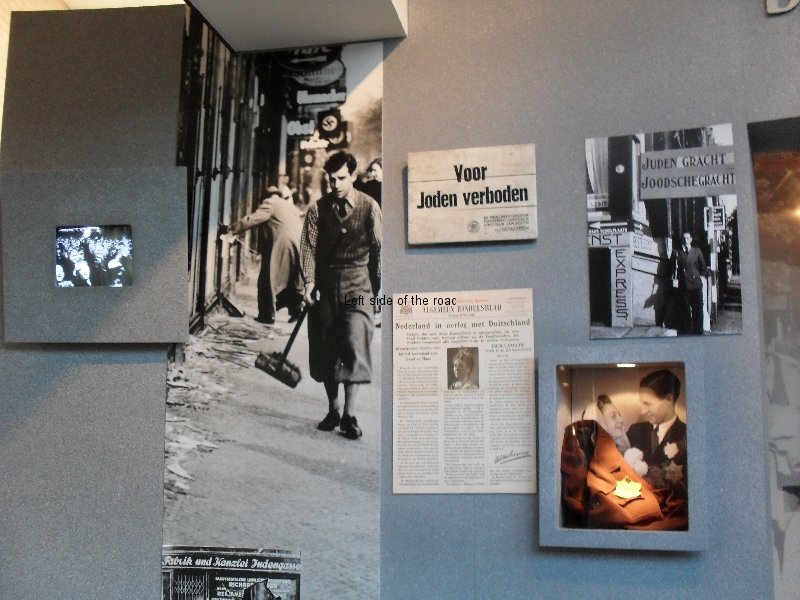
Monumento a las Guayarminas
The role of women, and the way they are represented on the lapidars in the Albanian revolution and the construction of Socialism, is one of things that make Albanian Socialist Realism quite unique. It is also a lesson for future artists following the next wave of proletarian revolutions. I have attempted to bring this out in my close reading of the lapidars posted to date and will continue to do so in the future. However, sometimes it’s useful to take a step away from the particular and make a similar analysis of ‘works of art’ created under conditions of capitalism. Such an exercise demonstrates how far art in Albania developed in the few years (46) that Socialism existed in that country. For this counter-analysis I have chosen a statue in the town of Gáldar in Gran Canaria called ‘El Monumento a las Guayarminas’ – The Monument to the ‘Indigenous Princesses’.
El Monumento a las Guayarminas
Before looking at the statue in detail perhaps it will be useful to give a bit of background to the first inhabitants of the seven Canary Islands, a people who are now referred to as the Guanches. That was almost certainly not the name they used to describe themselves, most people calling themselves words in their own languages that more approximate to ‘the chosen’, ‘the humans’ or ‘the people’ rather than anything more specific. All peoples really have been given their names by others, normally their enemies, so those names, which have now stuck, tend to be derogatory in translation. But then people don’t really look to deep into their own origins.
Anyway, it is generally agreed that the first settlers came from North Africa. No one seems to have come up with a rational explanation of why the first ones took the perilous journey of 800 or so kilometres across the Atlantic Ocean from the African mainland – but do so they did and in significant numbers so that by the 6th century BC they had established settlements in Tenerife – at least. It is also generally accepted they are of Berber origin, what remains of the Guanche language bearing similarities with the Berber spoken in parts of North-western Africa. (Although over a period of more than two thousand years they must have gone their own separate ways.)
Everything seems to have gone quite well until the Spanish decided to expand its empire but it doesn’t seem to have been that easy. The Spanish ‘Conquest’ took place throughout the 15th century, they only being fully in control of all the Canary Islands in 1496. In the process, in fine imperialist style, the Guanche culture, way of life and language was totally destroyed, the people being either killed or sold into slavery and their memory being effectively obliterated from history – a strategy the Spanish followed over the next two centuries in what is now known as Central and Latin America.
As an aside it is worth mentioning that, although unplanned by the Spanish, the conquest of the Canary Islands played a vital role in, first, Christopher Columbus’s first voyage of ‘discovery’ of America and the subsequent sacking and robbery of that continent over the next three hundred years. It was in the town that is now known as San Sebastian, in La Gomera, that was the last place of call (to stock up on fresh water) for Columbus’s three tiny ships before they set out to find a short cut to India. Unfortunately for the indigenous people, of what is now known as the Americas, their home was in the way. Most of the thousands of Spanish ships which were to make that voyage in the succeeding centuries used the Canaries as such a staging post.
Like many imperialist nations, to whom genocide was part and parcel of conquest, when it’s too late to do anything about it, they attempt to salve their consciences by making a mock recognition of their past crimes and paying lip service to respecting the culture they had previously, happily, destroyed. It isn’t a coincidence that this plays well in the present era of ‘political correctness’ and the world of tourism – the industry upon which the Canaries will either sink or swim. We should always remember the qualification that we should be aware of, and know how to tell the difference between, those who ‘speak well but mean bad and those who speak bad but mean well’.
And it is in this environment that we have to place the statue of the Monument to Las Guayarminas.
Gáldar is the location of the Cueva Pintada, a natural basalt cave where, some time in the 19th century, archaeologists re-discovered polychromatic wall paintings, pre-Conquest, about which theories of their meaning abound. (I will accept that they are important relics of the past but they are somewhat under-whelming when seen in real life.)
So in 1981, I assume the municipality of Gáldar, commissioned a local sculptor, Borges Linares, to create a public work of art to celebrate, commemorate, the slaughter, rapine, enslavement and virtual ‘ethnic cleansing’ of the Guanche people.
It’s here we start to see the separation of capitalist, imperialist, ‘justification’ art from the forward-looking, progressive, proletarian art that I have been writing about in the posts on the Albanian lapidars.
First its location. The statue and its plinth stand on a small, raised traffic island at the entrance to the commercial part of the town. To get a good view of it you have to step up on to the grass from the road and the statue is in no way ‘accessible’. The plinth is about 2 metres high so that even more separates the figures from the viewer.
Now, I’m quite happy about that. This is the type of statue that most people who pass it everyday couldn’t tell you anything about it in detail. However, by placing the statue in this location there’s an implied ‘look don’t touch’ message. This is what can be seen in the UK with those royal equestrian statues and any such representation of past kings or queens. It’s not for the hoi polloi to be able to touch such ‘sacred beings’. For the ‘peasants’ looking up, hopefully in some form of ignorant respect, it is the only way to appreciate such creations.
Then we have the name. The translation tells us this is a monument to three Guanche ‘princesses’. This demonstrates the first of the many banal aspects of this ‘work of art’.
Why princesses? For more than two thousand years a vibrant culture existed on the seven Canary Islands. It appears they were able to feed, clothe and house themselves relatively successfully. There seems to be evidence of a collective element in the storage of the basic food grains, principally barley (from which they made a staple called ‘gofio’). At the same time there was a hierarchy of wealth and power – which seems to have been tolerated in primitive societies as it is in most societies up to the present day – forelock tugging being an innate attribute of most individuals.
In Albanian Socialist Realism it’s the working class men and women who are celebrated and recognised for their contribution to the Liberation of the country from Fascism, the Revolution and the construction of Socialism.
In the sham ‘recognition’ of the Guanche the chosen are the ruling class, about which virtually nothing is known. In Europe there are princesses so there must have been the same in the Guanche culture. The Euro-centric view of society and history is thereby reinforced.

Tall, slim, ‘regal’ – banal
They are tall, slim, ‘regal’ – banal. They represent and say nothing. They are there, that’s all. Static, without purpose, parasitic, doing nothing. Like the present aristocracy, in countries like Britain, where the ignorant flag-waving monarchists, with their obsession with the Saxe-Coberg and Gotha family – which changed its name to Windsor in 1914 so the British workers and peasants that went to die in the war against Germany wouldn’t know that their monarchy was also German – continue to fawn and kowtow to a rich family of thieves whilst their miserable lives get worse due the effects of ‘austerity’.
The women of Albania fought, they took up arms with the men, they were equal, nay, more than equal to those slavish Nationalist quislings who sat down with the Fascist invaders. In Albania we have the example of the likes of Liri Gero, a brave teenager, a young peasant woman with a long-term perspective, tortured and murdered by the Nazis – as a ‘lesson’ to those who dare to fight for Freedom (the meaning of her name).
The Spanish Conquistadors had such contempt for those peoples whose land they stole that they didn’t keep comprehensive records of the culture they were hell-bent on destroying. The Guanche don’t seem to have been a particularly warring culture and would have to had learnt quickly how to deal with the invaders. They also seemed not to have developed any form of written or pictorial version of their language in which their history could be recorded. If there’s any evidence that women took part in the fighting I have yet to encounter such material. However, even if they did not actually take part in combat they would have kept their society running as smoothly as possible as the men were away, by working in the fields.
As I write that I start to wonder why it took women, from all over the world, so long, when faced with war and invasion where they would have suffered physically if their ‘side’ had lost, didn’t actually take part in the battles. Not all fighting has to depend upon physical strength. In fact those tactics of ‘guerrilla warfare’ developed by Chairman Mao actually favour intelligence and guile rather than brute force. A patriarchal society doesn’t provide all the answers.
It wasn’t until the Paris Commune of 1871 (the 146th anniversary of which was commemorated on March 18th last) that working class women first took a concerted and active part in the struggle for the betterment of their class in opposition to the established state. For their pains they were murdered and buried alive by the ignorant peasant army of Versailles in the last week of May of that year. Fighting a rearguard action the Women Incendiaries, such as Louise Michel, aimed to delay the inevitable and to leave a destroyed Paris to the victors – concerned more with property than human lives.
However, it wasn’t until the first Socialist revolution, led by an ideologically clear and organised Marxist Party (the Bolsheviks who were later to become the Communist Party of the Soviet Union) in the October Revolution in Russia in 1917, that women first started to play a real role in the fight for the liberation of the working class.
This role became even more important and politically relevant during the anti-Fascist and National Liberation Wars after 1939 in those countries where the struggle was led by Communist Parties – especially in the Soviet Union, China, Albania and Vietnam.
But in the 15th century the Guanche hadn’t had the opportunity to learn this lesson and they were virtually annihilated.
Instead of investigating and considering anti-Spanish resistance as the theme of his statue Linares decided on the ‘safe’ option, the option that wouldn’t in anyway rattle the status quo or the establishment. As stated before, the totally banal.
Volcanic islands are, by definition, mountainous and this is represented in the statue with the lower two princesses representing the foothills while the standing, central female representing the highest peak. This also alludes to the idea of royalty being the pinnacle of any society.
Here it seems appropriate to make a comment on the features of the females represented on this statue – and also in the other Canarian representations of the Guanche I’ve encountered. This is important as it indicates how serious the Spanish victors are about the whole of this restitution of history.
Remember that the Guanche are generally accepted to have arrived from North Africa. It might be my eyesight but I can’t see anything North African in the features of these three Guanche ‘princesses’.
The Northern Africa population today display a mixture of Arabic and Negroid features. These people have been mixing for thousands of years. The northern Caucasians would also be in the mix but due to the very nature of their location they would have had a minor impact upon the features of the population. That is now, I would consider it to have been even less in the past, that is, 600 years ago.
So why do these three women, as well as the people in the God-awful videos in the ‘Cueva Pintada’ Museum video presentations, look distinctively Spanish, or, at least Northern European/Caucasian?
This is all part of the ‘revisionist’ version of the past.
Imperialism seems to think that if they create those they have robbed and destroyed in their own image this is an appropriate recompense for their past ‘crimes’. (I put ‘crimes’ in parenthesis as they are not really accepted as such and still take place to this day in many parts of the world.)
There’s a contradiction in present day society. Metropolitan cities are praised yet the homogenisation that results from this is not considered to be an issue. It leads to an idea that we are ‘all the same’ but this doesn’t work when we look at the past. Especially those cultures that have been destroyed by a stronger – or at least more vicious (and often also supported by convenient diseases to which the indigenous population are not immune.) There is also the fact that such Metropolitanism misses the vast proportion of the world’s population and they wouldn’t know it if they saw it. Why is it that big city centralism is celebrated throughout the world but at the same time billions of people are living in abject poverty?
What we have in this statue is realisation of a dead culture which is represented by the images of the culture that killed it – and to which it has never been brought to book. These women have no Northern African features whatsoever, they look more Spanish, European. More like the invaders of 600 years ago. Those same invaders ‘celebrate’ those they destroyed by making a statue that looks more like the murderers than the victims.

‘Wonder Woman’
If you look at the ‘principal’ princess she looks like something from a video game. She bears no relation to a real person. She’s more like Linda Carter’s version of ‘Wonder Woman’ – but without the ability to fight – even down to the triangle on her headband. Her hair extends halfway down her back but it’s difficult to make out as the three women merge into each other, emphasising their lack of individuality. Also this principal ‘princess’ just stares out ahead of her, she looks catatonic, there’s no animation in her stance.
She also wears a totally impractical dress, full body length, with a slit that starts above her knee, the only indication of anything that approximates something living.
The statue is called the three princesses but the other two females that are part of the structure seem more to be servants than equals.
The one on the right looks out at rights angles to her more prominent sister. What she shares is the vacant, empty look. She is dressed in virtually the same style as the standing woman but one thing that’s emphasised by her stance is the inability of Linares to sculpt hands. Or feet. All these difficult appendages to the human body all merge into a shapeless mess.
What also differentiates the standing ‘princess’ with the others is the lack of a triangle on the forehead. So surely a sign of different social standing.
I have problems with the woman on the left. She’s also much lower but whereas the one on the right is kneeling the one on the left seems to be sitting down, her hidden legs (almost Mermaid like) covering the feet of the most important. She doesn’t stare into nothingness, she looks up, in a way that indicates suffering rather than anything pleasant. Although there are three women this statue owes more to those of images of the Crucifixion of Christ than anything original – or Pre-Conquest.

Waiting for a message
This third woman is also different in that she has something that looks like a couple of conch shells on her shoulder, resting them against the thigh of the standing ‘princess’. I don’t know. Perhaps she’s waiting for a message. Or has just received one that is so shocking that it is the reason for her surprised look.
One of the aspects of Albanian lapidars that I have mentioned a number of times – in praise – is that the name of the artist doesn’t appear on the sculpture. I like this indication of a lack of possession but at the same time I believe these Socialist artists should be attributed for their skill, but not on the work itself. The destruction of the archives of the Albanian League of Writers and Artists was a tragic consequence of the 1990s Counter Revolution. Because many of the lapidars were not ‘signed’ now it’s not so easy to learn who the sculptors were.

Discreet signature
However, in the case of the sculpture in Gáldar we know exactly who was the sculptor as he vandalises his own work by placing his name in the middle of the backs of the three women. He doesn’t chose a discreet location on the plinth, but in a place that is totally inappropriate.
The ideas that separate this sculpture from those of the Albanian lapidars demonstrate, without a shadow of a doubt, the difference between the capitalist and socialist systems.






